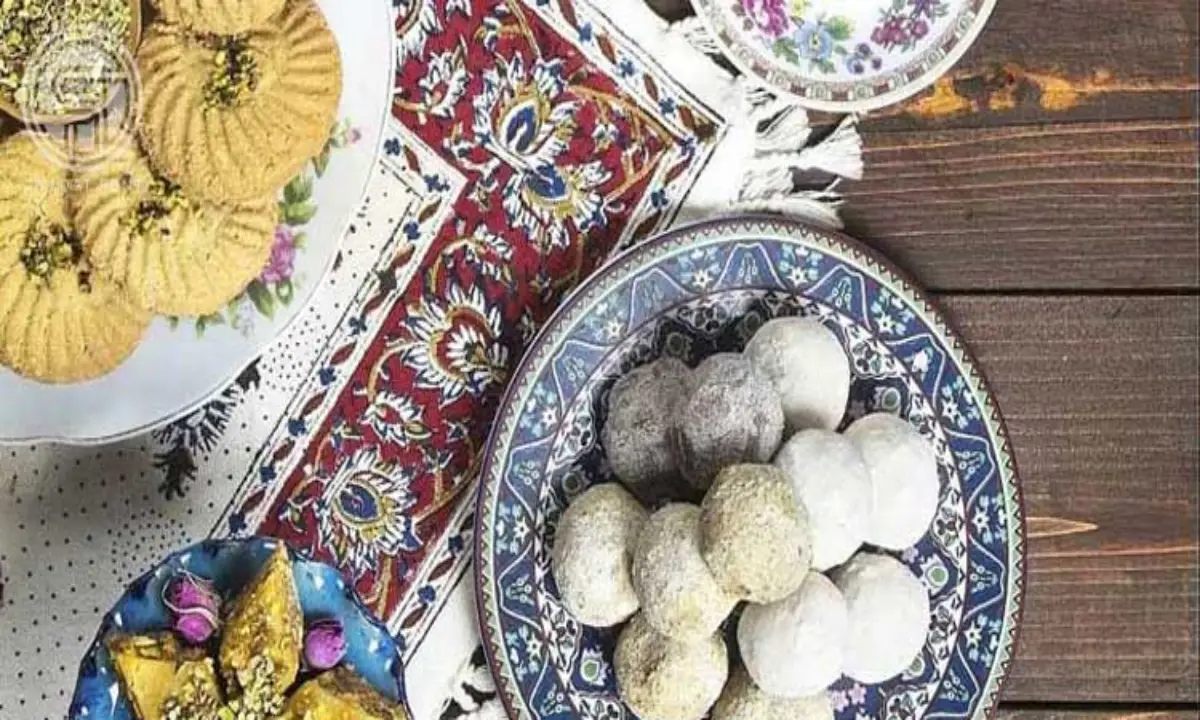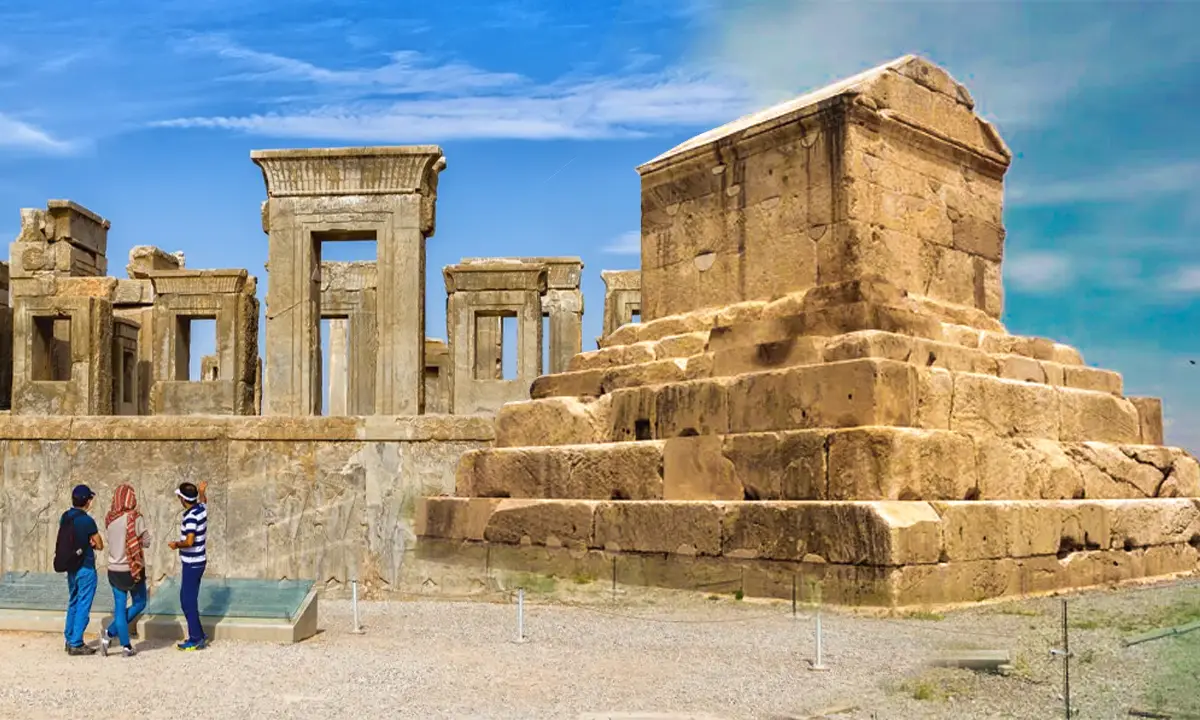About Monabbat Kari | Iranian Wood Carving Art
![]() Author : Alirezaa | Date : Monday 04 August 2025 14:37
Author : Alirezaa | Date : Monday 04 August 2025 14:37
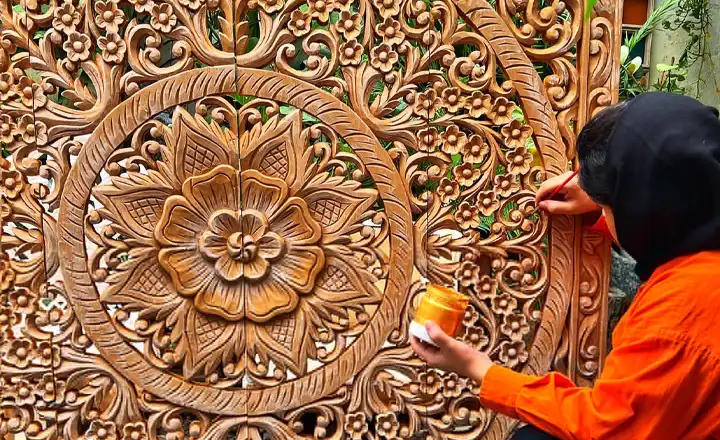
Monabbat Kari, or Marquetry, stands as a testament to the rich tapestry of Persian artistic heritage, showcasing the intricate beauty and meticulous craftsmanship that has been a hallmark of Iranian culture for centuries. This traditional art form involves the creation of elaborate patterns and images by inlaying pieces of wood, bone, metal, and mother-of-pearl into a wooden substrate, producing objects of exquisite beauty and complexity. The resulting works are not only decorative but also deeply symbolic, reflecting the Persian aesthetic of unity, harmony, and the interplay of nature and artistry.
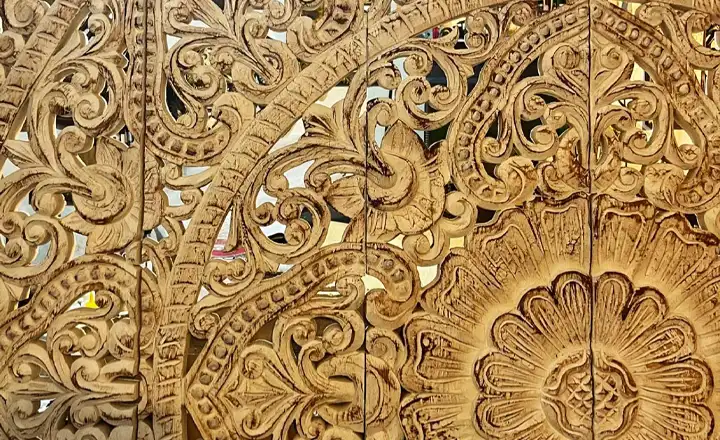
Monabbat Kari (Marquetry) in Iran
In Iran, Monabbat Kari is more than just a craft; it is a cultural emblem that embodies the creativity, patience, and skill of its artisans. The art has been passed down through generations, evolving with time yet steadfastly preserving its traditional essence. It graces everything from furniture and wooden panels to smaller items like jewelry boxes and picture frames, making it an integral part of Iranian interior design and architectural ornamentation.
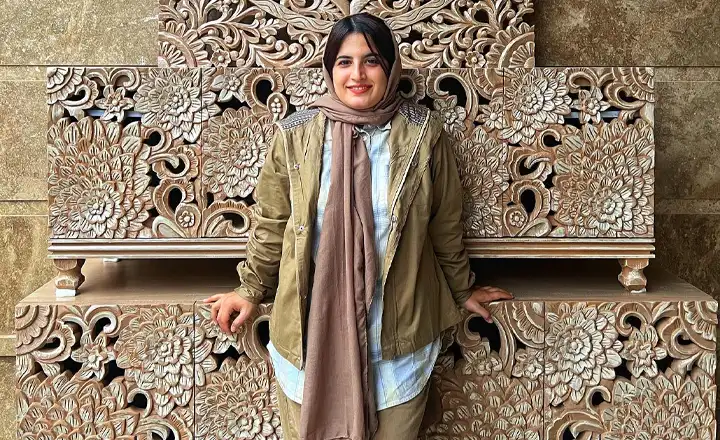
The significance of Monabbat Kari in Iranian culture extends beyond its visual appeal. It represents a deep-rooted appreciation for beauty and detail, a testament to the country's long history of artisanship in various domains, including carpet weaving, tile work, and calligraphy. Monabbat Kari, with its intricate designs and meticulous execution, stands as a symbol of the enduring spirit of Iranian craftsmanship, reflecting the country's rich artistic legacy and its ongoing dialogue between tradition and innovation.
Historical Background of Marquetry in Iran
The art of Monabbat Kari, or Marquetry, has deep roots in Persian history, tracing back to the ancient civilizations that flourished in the region now known as Iran. Its origins are intertwined with the broader tradition of woodworking and decorative arts that have been a significant part of Persian culture for millennia. Initially, the craft was simpler, focusing on the functional aspects of woodworking, but it evolved over time into a more intricate and artistic endeavor, reflecting the sophisticated aesthetic sensibilities of the Persian people.
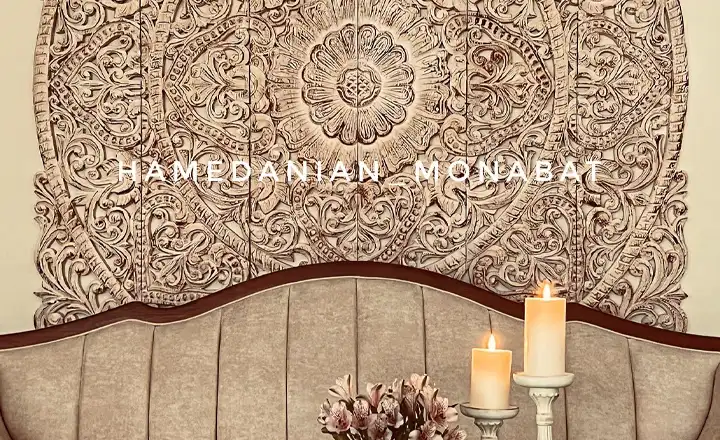
Early Beginnings
The earliest evidence of Monabbat Kari in Iran dates back to the Achaemenid Empire (550–330 BCE), where woodwork and inlay techniques were used to decorate palaces and ceremonial objects. These ancient techniques laid the groundwork for the development of Marquetry, showcasing the Persian artisans' skill in working with various materials to create detailed decorative patterns.
Golden Ages of Persian Art
The craft reached new heights during the Islamic Golden Age (8th to 14th century), a period marked by significant advancements in art, science, and culture across the Muslim world. During this time, Monabbat Kari became more sophisticated, incorporating Islamic geometric patterns, arabesques, and calligraphy into its designs. The Mongol invasion and the establishment of the Ilkhanate in the 13th century introduced Chinese and East Asian motifs into Persian art, including Monabbat Kari, leading to a fusion of styles and techniques.
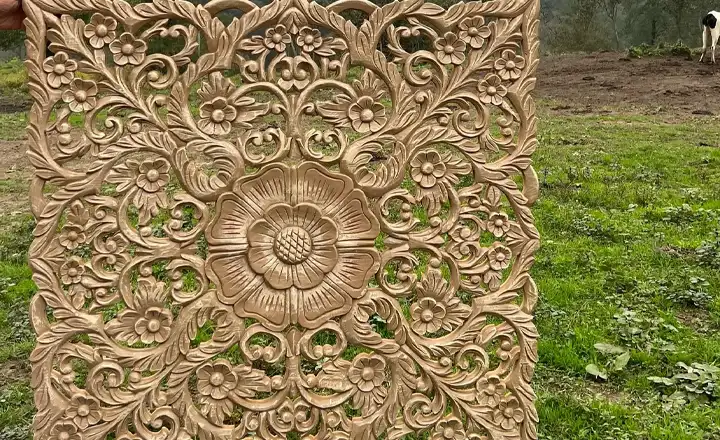
Safavid Era Innovations
The Safavid Dynasty (1501–1722) is often regarded as the pinnacle of Persian art and culture, with Monabbat Kari flourishing alongside other decorative arts such as tile work, manuscript illumination, and carpet weaving. The Safavids were great patrons of the arts, and their courts were centers of artistic innovation. During this period, Monabbat Kari artisans began to experiment with more complex designs and a wider variety of materials, including rare woods and precious metals, reflecting the era's opulence and sophistication.
Continuity and Change in the Modern Era
Throughout the Qajar Dynasty (1789–1925) and into the modern era, Monabbat Kari continued to be a cherished art form, although it faced challenges due to industrialization and changing tastes. Artisans adapted by incorporating modern themes and techniques, while still preserving the traditional craftsmanship and designs that define the art.
Contemporary Revival
Today, there is a renewed interest in traditional Persian crafts, including Monabbat Kari, as part of a broader cultural revival that values heritage and authenticity. Artisans and workshops across Iran are keeping the tradition alive, blending historical motifs with contemporary designs, and ensuring that the rich legacy of Monabbat Kari continues to evolve and thrive.
The history of Monabbat Kari is a reflection of Iran's rich cultural tapestry, showcasing the adaptability and creativity of Persian artisans through the ages. From its humble beginnings to its current status as a symbol of Persian artistry, Monabbat Kari remains a vibrant and integral part of Iran's artistic heritage.
The Art and Techniques of Monabbat Kari
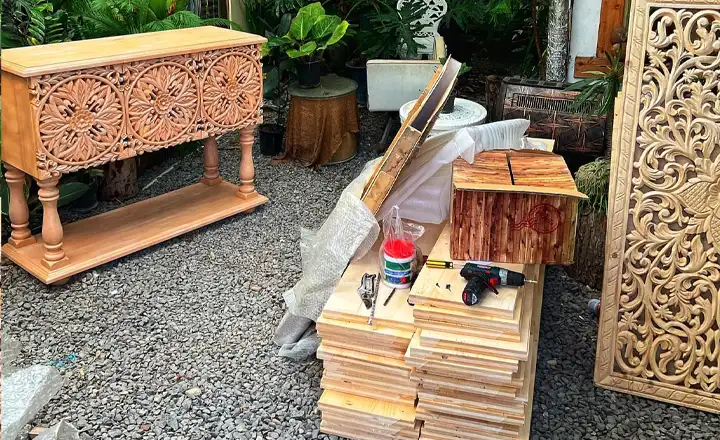
The art of Monabbat Kari, or Persian marquetry, is a meticulous and delicate process that transforms ordinary materials into exquisite pieces of art. The process is a testament to the patience, precision, and creativity of the artisans who practice this craft. From selecting the right materials to applying the finishing touches, each step in the Monabbat Kari process is carried out with utmost care and attention to detail.
Material Selection and Preparation
The first step in Monabbat Kari involves selecting the appropriate materials. Artisans choose from a variety of woods based on their color, grain, and texture, ensuring that the final piece will have a harmonious and appealing appearance. Common woods used include walnut, cherry, ebony, rosewood, and boxwood. In addition to wood, materials such as bone, metal (often brass or copper), and mother-of-pearl are used to add contrast and intricacy to the designs.
Once the materials are selected, they are carefully prepared. Wood is cut into thin veneers, while other materials are shaped and smoothed to fit the desired design. This preparation is crucial for ensuring a flawless fit and finish in the final piece.
Crafting Process
The heart of Monabbat Kari lies in its crafting process, which involves cutting and assembling the materials into intricate patterns. The designs are first sketched on paper or directly onto the basewood. Artisans then use fine saws and knives to cut the chosen materials into the required shapes. These pieces are meticulously fitted together like a jigsaw puzzle, creating the overall design. The complexity of the pattern and the number of materials used can vary greatly, from simple geometric shapes to elaborate scenes and floral motifs.
Glue is applied to secure the pieces onto the base, and the entire surface is then sanded smooth to ensure an even, seamless finish. The final product is often varnished or polished to enhance the natural beauty of the materials and protect the surface.
Traditional Patterns, Designs, and Motifs
Monabbat Kari is rich in symbolism, with each pattern, design, and motif carrying specific meanings. Traditional motifs include:
- Geometric Patterns: Symbolizing the universe's infinite nature and the harmony within it. These patterns are often inspired by Islamic art and architecture.
- Floral Designs: Representing nature, beauty, and the divine. Flowers, leaves, and vines are commonly used motifs, each with its symbolic meaning. For example, the rose symbolizes love and spirituality, while the lotus represents purity and rebirth.
- Calligraphy: Often incorporated into Monabbat Kari, calligraphic designs can include poetry, religious texts, or proverbs, adding a layer of meaning and personalization to the artwork.
- Figurative and Pictorial Scenes: Less common due to religious considerations, but some pieces depict landscapes, animals, or historical events, serving as narrative works that tell a story or celebrate Persian heritage.
The art of Monabbat Kari is not only a display of technical skill but also a medium through which Persian culture and philosophical ideas are expressed. The choice of patterns and materials, along with the intricacy of the work, reflects the artisan's mastery and the rich tapestry of meanings embedded in Persian art. Through Monabbat Kari, artisans continue to preserve and celebrate Iran's cultural heritage, creating pieces that are both aesthetically pleasing and deeply meaningful.
Regional Variations of Monabbat Kari in Iran
Monabbat Kari, or Persian marquetry, showcases a fascinating diversity that reflects the rich cultural tapestry of Iran. Each region contributes its unique flair and techniques to the art, resulting in a wide array of styles that embody the local traditions, resources, and artistic sensibilities. Among the many cities renowned for their contribution to this craft, Isfahan, Shiraz, and Tehran stand out for their distinctive approaches and contributions to Monabbat Kari.
Isfahan
Isfahan, often referred to as the cultural capital of Iran, has a long-standing reputation for its exquisite handicrafts, including Monabbat Kari. The city's artisans are known for their precision and creativity, often incorporating intricate floral and geometric designs that reflect the city's rich architectural heritage. Isfahan's marquetry is characterized by the use of high-quality woods and the inclusion of detailed inlaid work with materials like ivory, gold, and silver, which are sometimes used to highlight the elegance of the designs. The artwork often mirrors the beauty of Isfahan's Islamic architecture, featuring motifs and patterns seen in the city's mosques and historical buildings.
Shiraz
Shiraz, with its poetic legacy and lush gardens, brings a romantic and lyrical quality to its Monabbat Kari. The craft in Shiraz is distinguished by the use of vibrant colors and the depiction of natural scenes, including birds, flowers, and landscapes, which are inspired by the city's beautiful gardens and the region's rich flora and fauna. The work from Shiraz often conveys a sense of narrative, with pieces telling stories or celebrating the beauty of nature, making it unique in the realm of Persian marquetry.
✔️Read More : Shiraz souvenirs and handicrafts; What to buy in Shiraz?
Tehran
As the capital and a modern metropolis, Tehran is a hub for innovation in Monabbat Kari, blending traditional techniques with contemporary designs. Artisans in Tehran are experimenting with new materials and methods, incorporating modern motifs and abstract designs into their work. This city's marquetry stands out for its boldness and willingness to push the boundaries of the craft, reflecting the dynamic and evolving nature of Iranian culture. Tehran's contribution to Monabbat Kari is a testament to the craft's adaptability and its ability to resonate with changing tastes and times.
Case Studies and Unique Styles
- Isfahan's Inlaid Mirrors: A notable example of Isfahan's craftsmanship is the production of inlaid mirrors, where artisans create elaborate frames using Monabbat Kari techniques, often incorporating calligraphy and Islamic motifs into the design.
- Shiraz's Garden Scenes: Shiraz artisans excel in creating pieces that depict the region's famous gardens, using a variety of woods and inlays to capture the colors and vibrancy of these natural landscapes.
- Tehran's Contemporary Pieces: In Tehran, a notable trend is the creation of contemporary art pieces that utilize traditional marquetry techniques to produce abstract and modern designs, appealing to a global audience and showcasing the versatility of Monabbat Kari.
Each city's unique approach to Monabbat Kari is a reflection of its history, culture, and artistic heritage, contributing to the rich diversity of this traditional Persian art form. Through their regional variations, artisans across Iran continue to keep the tradition alive, celebrating the beauty and intricacy of Monabbat Kari while adapting it to reflect their local identity and contemporary influences.
Collecting and Appreciating Monabbat Kari
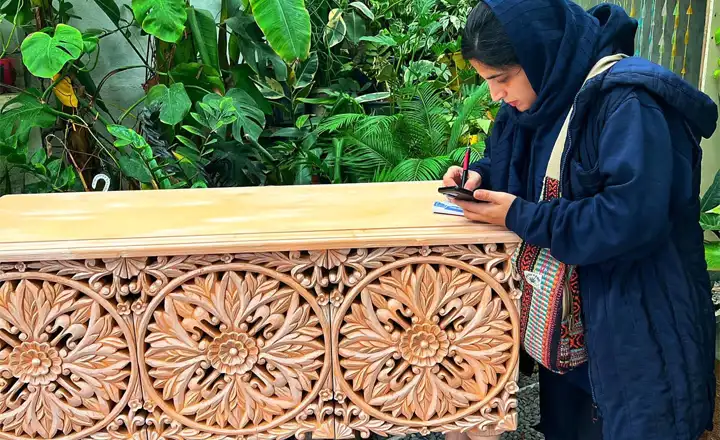
Collecting and appreciating Monabbat Kari, the exquisite Persian art of marquetry, can be a deeply rewarding pursuit, offering both aesthetic pleasure and a tangible connection to Persian culture and craftsmanship. For collectors, whether novices or seasoned enthusiasts, understanding the nuances of quality, provenance, and integration into contemporary spaces is key to building a meaningful and cohesive collection.
Identifying Quality Monabbat Kari Pieces
Craftsmanship and Detail: High-quality Monabbat Kari is characterized by its meticulous craftsmanship. Look for precise inlays, seamless joins, and a smooth finish. The complexity and fineness of the pattern can also indicate the artisan's skill level.
Materials Used: Quality pieces often use a variety of high-grade materials, including rare woods, metals, and inlays of bone or mother-of-pearl. The richness and depth of the materials contribute to the piece's overall beauty and value.
Design and Aesthetics: Authentic Monabbat Kari pieces will feature traditional Persian motifs and designs. However, the uniqueness of the design and how well it's executed can significantly affect its desirability and value.
The Importance of Provenance, Craftsmanship, and Condition
- Provenance: Knowing the history of a piece, including its origin and previous ownership, can add to its value and authenticity. Provenance can also provide insight into the piece's cultural and historical significance.
- Craftsmanship: The skill with which a piece is made directly impacts its value. Artisans with a recognized reputation for excellence can command higher prices for their work. The intricacy of the design and the precision of the inlay work are critical markers of a craftsman's expertise.
- Condition: The condition of a Monabbat Kari piece is crucial in determining its value. Pieces in pristine condition, without missing inlays or significant damage, are more desirable. However, some wear may be acceptable if it's consistent with the item's age and history, providing it does not detract from the overall aesthetics or integrity of the piece.
Incorporating Monabbat Kari into Modern Decor
- Accent Pieces: Use Monabbat Kari items as accent pieces in a room to add sophistication and interest. A beautifully inlaid table or a set of decorative panels can serve as focal points in a modern living space.
- Mix and Match: Monabbat Kari pieces can complement both traditional and contemporary decor. Mixing these items with modern furniture and decor can create a dynamic and eclectic aesthetic.
- Theme and Color Coordination: Consider the overall theme and color palette of your space. Monabbat Kari pieces often feature-rich, warm tones that can harmonize with a variety of decor styles. Choosing items that match or contrast pleasantly with your existing colors can enhance the overall coherence of your interior design.
- Display and Lighting: Proper display and lighting can elevate the appearance of Monabbat Kari pieces, accentuating their details and craftsmanship. Position items where they can catch the light or be easily viewed to ensure they draw the attention they deserve.
Collecting Monabbat Kari offers a unique opportunity to own a piece of Persian heritage, embodying centuries of artistic tradition. By focusing on quality, provenance, and thoughtful integration into modern spaces, collectors can both preserve and celebrate this ancient art form, adding depth and character to their homes and collections.
✔️Read More : Persian Miniature | the art of intellect and thought
Last Word
Monabbat Kari, with its intricate beauty and deep-rooted heritage, continues to be a vibrant testament to the enduring legacy of Persian craftsmanship. As a cherished element of Iranian cultural heritage, it reflects a profound history of artistic endeavor, connecting past generations with the present through each meticulously crafted piece. Looking towards the future, Monabbat Kari stands at a crossroads of tradition and innovation. Artisans today are not only guardians of ancient techniques but also pioneers, infusing new life into traditional patterns with contemporary designs and applications. This dynamic blend ensures that Monabbat Kari remains relevant and cherished, both in Iran and around the world. As it evolves, this art form promises to continue inspiring admiration and appreciation, bridging cultures and epochs with its timeless beauty and craftsmanship.


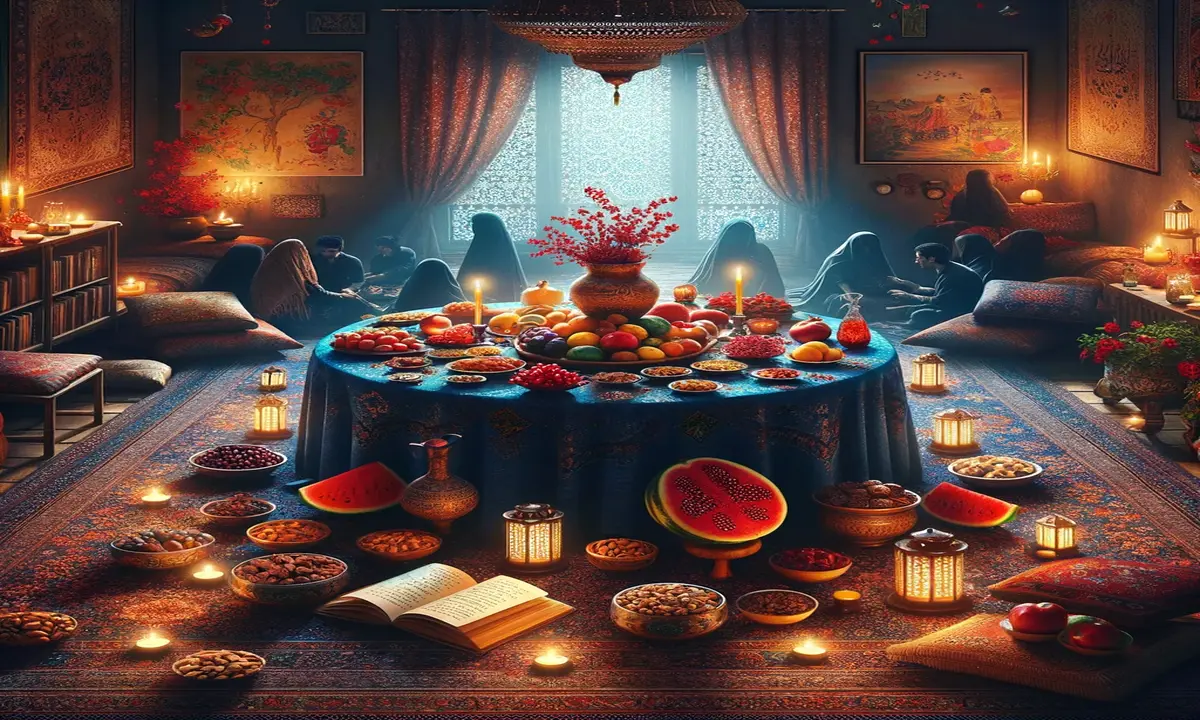
.webp)
